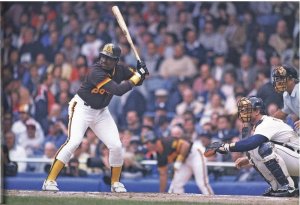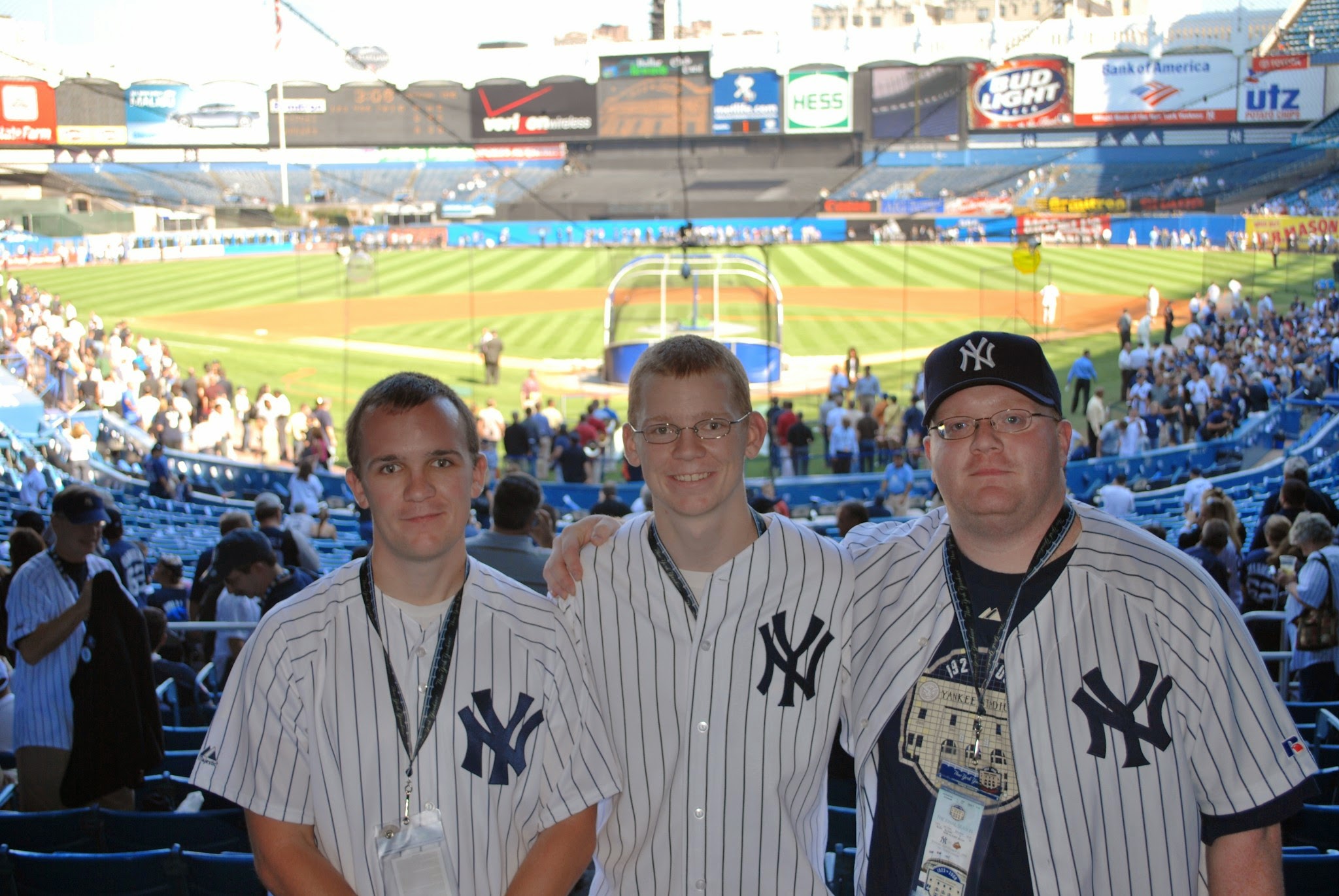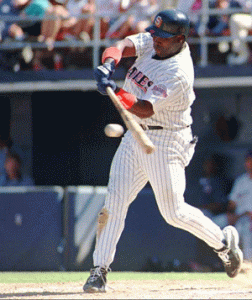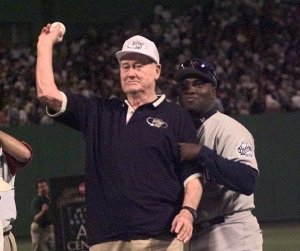Tagged: Michael Young
Reaching Your Goal
Are you part of the nearly half of New Year’s Resolutioners that have given up? Or are you one of the less than 10% who will be successful? Life is hard, keep working towards your dreams. Ron Wright never gave up. He fought for what he wanted. All of his hard work eventually paid off.
Ron Wright was selected in the 7th Round of the 1994 MLB Draft by the Atlanta Braves from Kamiakin High School in Kennewick, Washington. He played two and a half seasons in the Braves minor league system. Wright spent 1994 with the Rookie Level Gulf Coast League Braves, 1995 with the Single A Macon Braves, and 1996 with the High A Durham Bulls and Double A Greenville Braves before an August trade to the Pittsburgh Pirates. Wright now set his sights on the Steel City. He finished 1996 with the Double A Carolina Mudcats and spent 1997 with the Triple A Calgary Cannons. 1998 was a lost season as Wright appeared in only 20 Games, 17 with the Triple A Nashville Sounds and 3 with the Rookie Level Gulf Coast League Pirates. 1999 was equally frustrating, playing only 24 Games for the Double A Altoona Curve. In October, the Cincinnati Reds selected Wright off waivers. His aim moved further down the Ohio River. Wright spent 2000 with the Double A Chattanooga Lookouts and Triple A Louisville RiverBats. In November, Wright signed as a Minor League free agent with the Tampa Bay Devil Rays. He spent the season back with the Durham Bulls, now a Triple A team. Again a Minor League free agent, Wright signed with the Seattle Mariners for the 2002 season. He began the season with the Triple A Tacoma Rainiers. Ron Wright had played eight Minor League seasons with 12 different teams.
Heading into the 2002 season Wright had played in 666 Minor League games. He hit .261 with 121 Home Runs, 453 RBI, and 361 Runs scored in 2,729 Plate Appearances. Wright had played at every level, Rookie Ball to Triple A. He fought through injuries and the ups and downs of professional baseball. Wright remained one step away from the Majors. The trip from Cheney Stadium to Safeco Field is only 35 miles, but Wright kept fighting to make that drive.
The bad news in Seattle was future Hall of Fame Edgar Martinez was hurt running to First. Martinez’s injury put a damper on the Mariners early season success. Edgar’s injury was bad news for everyone except Minor League journeyman Ron Wright. He finally got the call to the Big Leagues. The years of toil had paid off. He was heading to the show.
It was a pleasant afternoon in Arlington, Texas. It was 76℉ and overcast. Ron Wright had made it to the Majors on Sunday, April 14, 2002. The Mariners were on the road, playing the Rangers at The Ballpark in Arlington. 32,866 fans watched as Seattle’s John Halama faced off against Texas’ Kenny Rogers. Ron Wright was the DH, batting 7th for the Mariners. All was right in the world.
In the Top of the 2nd, Ron Wright strolled to the plate. This was the moment he had worked so hard for, his first Major League At Bat. Ruben Sierra was standing on Second after a lead off Single and a John Olerud Walk. Wright stepped in the Right Handed Batters Box looking to add to the Mariners 1-0 lead. Kenny Rogers rocked and fired. In the blink of an eye, Wright was walking back to the dugout. Striking out looking on three pitches was not how Wright envisioned his first At Bat in the Big Leagues, but he had stamped his name in the record books as playing in a Major League game. There would be more chances.
The next opportunity for Wright came in the Top of the 4th. Seattle still clung to its 1-0 lead, and Wright could extend the lead. He again came up with Sierra and Olerud on base. Sierra led off with a Double and moved to Third on Olerud’s Single. Wright worked the count to 2-2. On the fifth pitch he swung. The ball bounced to Rogers on the mound who fired to Alex Rodriguez coming over from Shortstop to cover Second for the first Out. Rodriguez then threw home to Catcher Bill Haselman who chased Sierra back towards Third. He tossed the ball to Third Baseman Hank Blalock who chased Sierra back towards Home. Blalock tossed the ball to Rogers who tagged Sierra for the second Out. During the rundown Wright reached First and was advancing towards Second. He was never known for his speed, just nine Stolen Bases in the Minors. After tagging Sierra, Rogers threw to Second Baseman Michael Young who tagged Wright coming into Second for the third Out. The 1-6-2-5-1-4 Triple Play killed the rally, and made Wright’s debut memorable for all the wrong reasons.
Baseball is about dealing with failure. There are few failures like hitting into a Triple Play. Baseball does not give you long to dwell on your failures. In the Top of the 6th, Wright came up for the third time. He was patient in his first two At Bats, but not this time. The Mariners were trailing 2-1. Again Ruben Sierra was on Second and John Olerud on First. On the first pitch from Rogers, Wright hit the ball to Shortstop Alex Rodriguez to start a Double Play. Sierra moved to Third, but the rally was dead. The frustrating day continued.
Ron Wright never got that fourth At Bat. Manager Lou Piniella sent up Pinch Hitter Mark McLemore in the 7th Inning. His Major League debut was complete. Wright had three At Bats against Kenny Rogers. He saw nine pitches. Made six Outs. The Mariners won 9-7. The game took 3 hours and 39 minutes. Before the Mariners returned to the field on Monday Ron Wright was back in the Minors. He never returned to the Majors. Wright’s Major League career took less time than it takes to watch Gone With The Wind.
Was it worth it? Despite one of the worst possible debuts, Ron Wright can proudly say he was a Major League Baseball player. Only 18,039 players before him earned that title. While his career was not what he hoped, Wright made it to the top. He kept grinding. He kept going. The baseball gods rewarded his lifetime of work with one of the strangest days ever on a baseball field. Keep working towards your goals.
DJ
One for the Road
Globe Life Park in Arlington may not have the history of old Yankee Stadium or Fenway Park, but it has been home for the Texas Rangers over the last 26 summers. Memories with friends and family were made, though most are never known to the masses. In those summers, the Rangers made back to back World Series appearances in 2010 and 2011. Eight trips to October in all. Fans watched Hall of Famers Ivan Rodriguez and Adrian Beltre play. They watched Rafael Palmeiro, Alex Rodriguez, and Josh Hamilton play, but each will not reach Cooperstown for individual issues complicating their eligibility to play. Other players like Juan Gonzalez, Ian Kinsler, Prince Fielder, and Michael Young hold a special place in the hearts of Ranger fans. Memories were made.
Jesse, John, and I had the privilege to attend the final game at old Yankee Stadium. Baseball is beautiful. (The Winning Run/ JJ)
This weekend the Rangers close Globe Life Park and their season against the Yankees. Texas closes their second stadium since arriving from Washington in 1972. Closing out stadiums is becoming a habit for Jesse, John, and myself. Globe Life Park will be our third fine game attended. We sat in the left field seats as the Braves closed Turner Field and moved to the suburbs and SunTrust Park in 2016. Our first, and forever greatest, final game was sitting in the right field bleachers for the final game at old Yankee Stadium in 2008. The Yankees missed the Postseason for the first time since 1993, the House that Ruth Built did not see one final October. The history of old Yankee Stadium is unmatched in baseball. Closing out old Yankee Stadium was bittersweet, attending the Mets final home stand at Shea Stadium was not. Low flying planes, Shea shaking as we walked around, and Mets fans doing the wave remain vivid in my memory. It is hard competing with old Yankee Stadium.
Jesse, John, and I do attend games together when stadiums are not closing. A late night decision to drive 10 hours to watch the Pirates play at PNC Park was fantastic. Baseball creates memories that last a lifetime. Attending a game is always enjoyable. So once more we are hitting the road to say hello and goodbye to a baseball stadium, creating our own memories like so many fans before us.
DJ
Tony Gwynn- Gone Too Soon
Arguably the best hitter of the last 30 years has left us far too soon. Tony Gwynn passed away at 54 from cancer. For 20 seasons, Tony Gwynn put on a clinic for what it meant to be a professional hitter. He always had the ear-to-ear smile that many, including myself, fell in love with from the first time you saw him play. Gwynn hit .289 in 1982, after he was called up from AAA in July. This was the only season in which he would bat below .300 in his 20 year career. A career .338 hitter, Gwynn won the National League Batting Title eight times. He flirted with .400 in 1994, when he finished the strike shortened season with a .394 average. Gwynn collected 200 or more hits five times. It would have been seven if not for the 1994 players strike. He has 165 hits through 110 games in 1994 and finished the shortened 1995 season with 197 hits in 135 games. There could have been more if not for injuries which reduced his playing time during his 30’s.

Mr. Padre at work (http://thunderbird37.com/)
What Gwynn lacked in power he made up with always being on base. He hit 135 career home runs, topping out at 17 in 1997. He walked 790 times against 434 strike outs in his career. His career 1.82 walks per strike out is unimaginable today. In 1987, Gwynn struck out a career high 82 times; both Upton brothers, BJ and Justin, of the Atlanta Braves have already surpassed this make this season. This “high number of strike outs” for Gwynn was an aberration, he would not strike out more than 59 times in any other season in his career. Despite his “high” strike out total, the 1987 season was not a down year for Gwynn, he still hit .370. during his career, Gwynn won seven Silver Slugger Awards, five Gold Gloves, elected to 15 All Star games, was the recipient of the 1995 Branch Rickey Award (in recognition for his exceptional community service), the 1998 Lou Gehrig Memorial Award (awarded to the player who best exhibits the character of Lou Gehrig both on and off the field), the 1999 Roberto Clemente Award (player who best exemplifies the game of baseball, sportsmanship, community involvement, and the individual’s contribution to his team), and was elected by the BBWAA to the National Baseball Hall of Fame, with the seventh highest vote total ever (97.61%) in his first year of eligibility.
Michael Young, who holds the record for most hits for the Texas Rangers, reacted to the sudden and sad news of Tony Gwynn’s death simply, “Ted Williams gets to talk hitting again.” This sums up the relationship between Williams and Gwynn perfectly. Listening to both men discuss their approach to and the science of hitting are both legendary and a fascinating listen. Both possessed the skills which went well beyond simply see the ball, hit the ball. They were students of the game who worked hard at their craft. The 1999 All Star Game at Fenway Park was a showcase for Ted Williams, and through the entire memorable evening Tony Gwynn was his trusty sidekick. When the rest of the All Stars crowded around the golf cart Williams rode around Fenway in, the camera seemed to always have both Williams and Gwynn in the frame together. The ceremonial first pitch left these two Hall of Fame hitters and friends in front of the pitcher’s mound together and alone. When Ted Williams asked “where’s he at?” referring to the catcher, Gwynn pointed and showed his friend and mentor the way while flashing his famous boyish smile.
Forever a San Diego man, Tony Gwynn returned to his alma mater San Diego State in 2002 as a volunteer coach and in 2003 as the Head Baseball Coach for the Aztecs. Gwynn remained the Head Coach of the Aztecs until his death. Even when his playing career was over, Gwynn was not through with baseball. Under Gwynn the Aztecs won one regular season Mountain West title, two Mountain West Tournament Championships, and made three appearances in the NCAA Tournament. The transition from playing to coaching is often difficult for the greats, but Gwynn seemed to thrive on the challenge and was building a successful program. Unfortunately we will never see what he could have built with more seasons as a Head Coach either at San Diego State or even with the Padres.
Tony Gwynn lived a full baseball life. He was and always will be Mr. Padre and Captain Video. Despite the hours of hard work looking to get every last once of talent out of his body, Gwynn never stopped smiling. That smile we all fell in love with, the smile that exuded the boyish pleasure Gwynn got from playing the game. That smile is gone too soon due to cancer. Cancer which Gwynn himself admits was caused by decades of using chewing tobacco, usually more than a can a day. All the smiles and laughter that made Tony Gwynn also had a protruding lip stuffed with dip.
Gone too soon. Thank you Tony Gwynn for reminding us all that you can be a contact hitter, trying to go through the 5.5 hole, one of the true legends in the history of the game all without the power to hit 500 foot home runs which became so common place during his career. Tony Gwynn was a great hitter, a great all around baseball player, but he was an even better person. Mr. Padre will be missed in San Diego and anywhere people play baseball.
D



